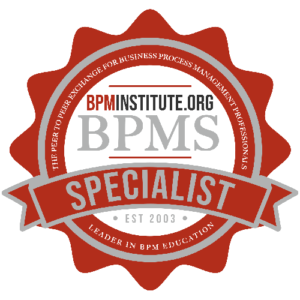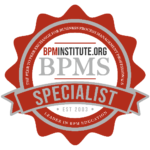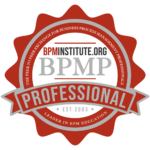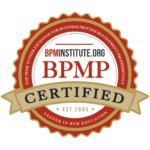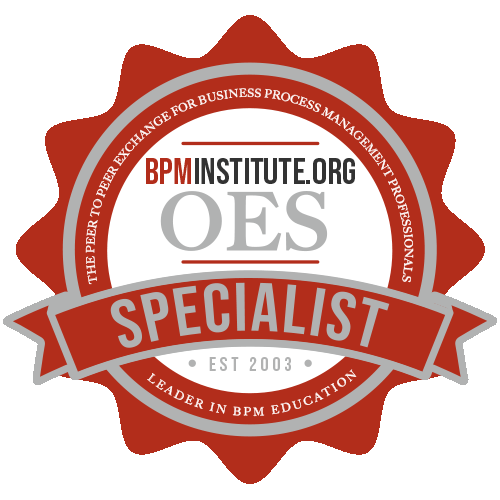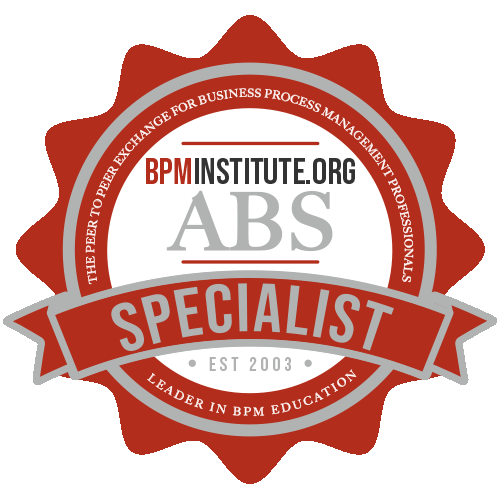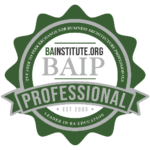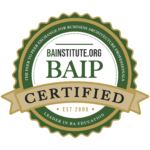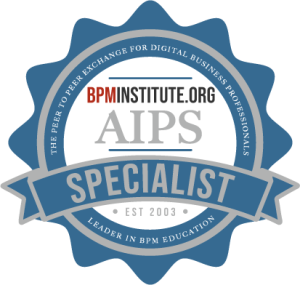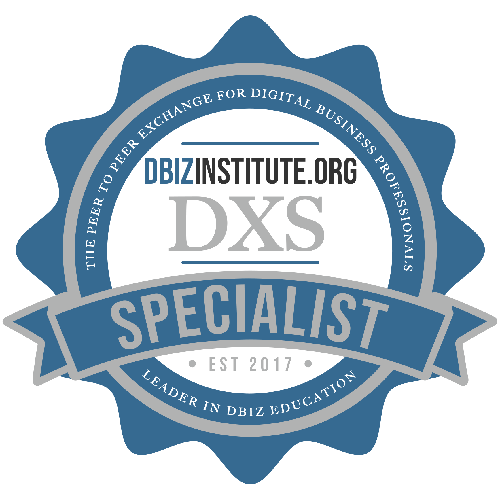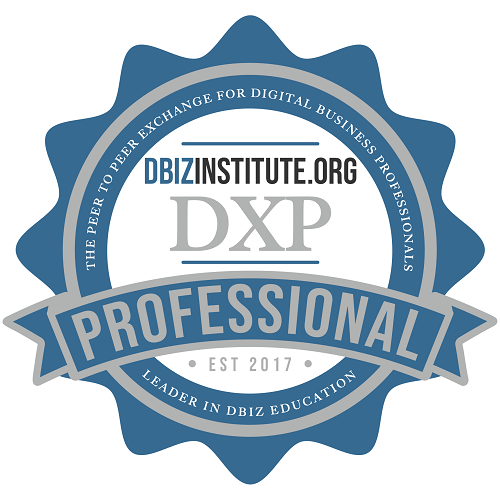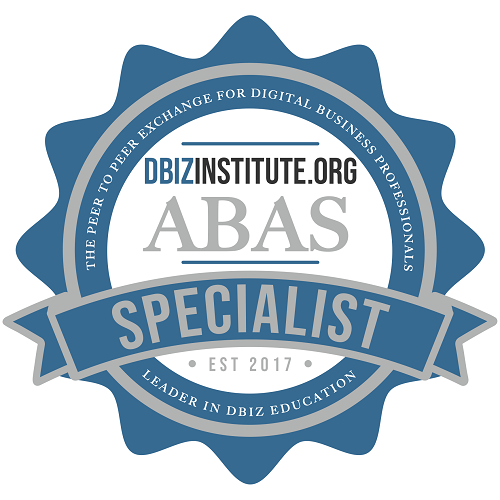Home / Resources
Resources
Discover a Wealth of BPM Knowledge and Expertise at BPMInstitute.org!

Reviews: Necessary Evil or Symptom?
During any BPMS demo, the vendor will demonstrate how the application handles the review and approval cycle of some work product, e.g., a document, form, or report. Review and approval of these products is a process cycle that all businesses share, and in my opinion, one that’s entirely too common. Reviews aren’t disappearing anytime soon. They are in some cases a necessary evil. However, let’s be clear – reviews aren’t value added activities.

Collaboration and Business Decision Management
Business Rule Management Systems (BRMS) have been described as the ultimate platform to achieve true collaboration. By bridging the gap between business and technology, two previously disparate groups that did not speak the same language could now do so in the universal language of business rules. And to a certain extent these systems met that goal. However, there have been persistent nagging issues centered around things like requirements and change management that seem to keep getting in the way of collaboration and, ultimately, true agility.

Process Management Scenarios and their Technology Requirements
One of the interesting BPM debates I’ve been following in the past months has been about the relevance of BPM technology standards such as BPMN and BPEL (with some protagonists claiming that BPEL isn’t powerful enough as a modelling or implementation language to express the richness of some processes; and others claiming that in fact it’s just fine – for example, see the online debate between Keith Swenson and Ismael Ghalimi.

BPM and Software as a Service
Today’s economic pressures are resulting in an increasing scrutiny on IT budgets and how to achieve the best return on investment. IT project portfolios are constantly evaluated by the CIOs in light of new budgets and constraints. Clearly IT spending is on the fall, significant budgets cuts are on way, and new initiatives are impacted. BPM initiatives that had initially made their way into the portfolio are now being re-evaluated given the upfront capital cost of procuring Hardware and software.

Fly-by-BusinessDrivers – Agile Supply Chain Organization with Business Drivers Embedded BPM System
As much as business drivers cannot be divorced from an effective and successful supply chain, the same is true for Business Process Management (BPM) that could help raise the bar for supply chain.
Supply chain in Organizations are very complex with numerous distribution types and channels, in house and outsourced factories, third party warehouses, logistics and suppliers with varied contracts, etc. Enterprise Resource Planning (ERP) software enabling supply chains greatly increase the availability of current information.

Integrated Business Management in the Process Age: Creating an Agile Business Management Paradigm
In the transition from the Information Age to the Process Age, we need new thinking and methods to design products and services for the agile business environment. Processes demand a new paradigm that expects more from managing a business and creating solutions than the current information-oriented paradigm. We need methods that are fit for working with processes to replace our methods for working with information, as they aren’t built on the necessary concepts.

Service Oriented Architecture – A Service Contract Design Template
Introduction
Service-Oriented Architecture (SOA) is a highly collaborative paradigm, and attempts to break down the invisible barriers between IT and business. A critical step to be undertaken when implementing a SOA is to identify, specify, catalog and document candidate services. Given the sheer complexity of the task, this is more of an art, rather than a science. However, there do exist some common-sense principles and best practices for this purpose.

Technology Does Not Matter, Methodology Does
Does it still matter what matters in Enterprise IT? Even before the current harsh times the field seemed to be a land of confusions and illusions, from CIOs greatly overestimating their departments’ and their own role in the eyes of their CEOs1, to business analysts continuously unable to get exactly what they need when they need it from their IT counterparts. And to a respectful analytical firm putting as much confusion as possible in one sentence: “Although the word ‘SOA’ is dead, the requirement for service-oriented architecture is stronger than ever” (sic!).

Structuring a Process Management Center of Excellence: the Value Chain
1. INTRODUCTION
Over time, organizations have been increasing their interest in process management institutionalization. The growing complexity and scope of processes, and the frequency with which process modeling, improvement, deployment, integration and coordination occur require companies to structure in such a way as to manage their processes [2][5]. In such a context, organizations have sought concepts and guidelines towards structuring a process center of excellence [1][3].

The Transition to Business Architect
The concept of business architecture and the role of the Business Architect did not exist when most people today entered their respective industries; no curriculum was available to prepare anyone for the role and, as far as I know, there is still no certification available for today’s Business Architects. So from a practical sense, what does one look for when hiring a Business Architect or promoting someone to the role of Business Architect?

Enterprise SOA Deployment Requires SOA Governance
Service-Oriented Architecture (SOA) is an approach to distributed computing that considers software functionality as services on a network. SOA represents the next major step in the evolution of Information Technology (IT) strategies. Businesses are looking to SOA as the best way to leverage information technology assets and to provide the business the agility required to compete in today’s economy. In addition, SOA holds promise to companies looking to bring order to an increasingly complex and chaotic IT environment and equip themselves to manage change.
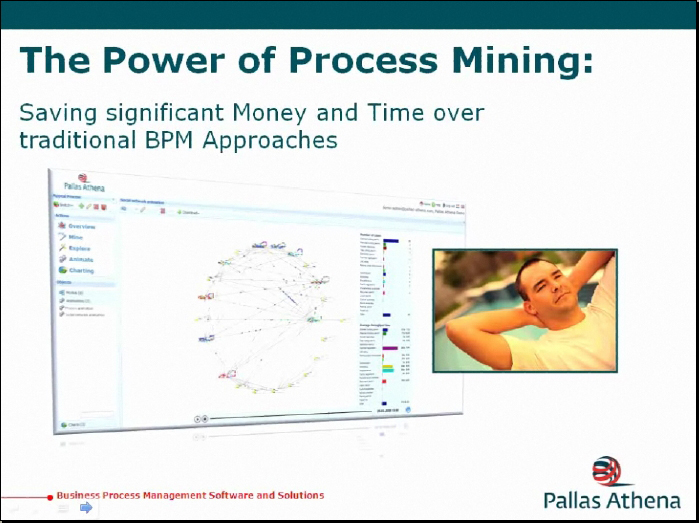
The Power of Process Mining: Saving Significant Money and Time Over Traditional BPM Approaches
In this dynamic session, Pallas Athena will present new BPM Process Mining technologies that have been proven to save Tens to Hundreds of Thousands of Dollars and shave months of effort over traditional BPM approaches. Process Mining can have an immediate positive impact on your company, your employees and your financial bottom-line.

Closing the IT and Business Divide
Millions of dollars spent, countless hours wasted, and frustrated business users seem to be fairly standard outcomes when IT and business try to work together. While this problem seems apparent, little progress has been made. What is happening?I believe two key factors are in play. First both the IT and business folks are operating under a number of faulty assumptions. Here are some flawed assumptions from the IT perspective.

Research Brief: BPM and Banking
Bankers exist in one of the most competitive environments in all of business. Keeping customers, attracting new customers, rapidly delivering new products, providing consistent service through multiple channels (branch office, internet, ATM, telephone) and meeting regulatory requirements is a daunting pursuit. Read this BPMInstitute.org Research Brief to find out how BPM allows banks to remain flexible and move quickly to respond to the conditions in their industry.
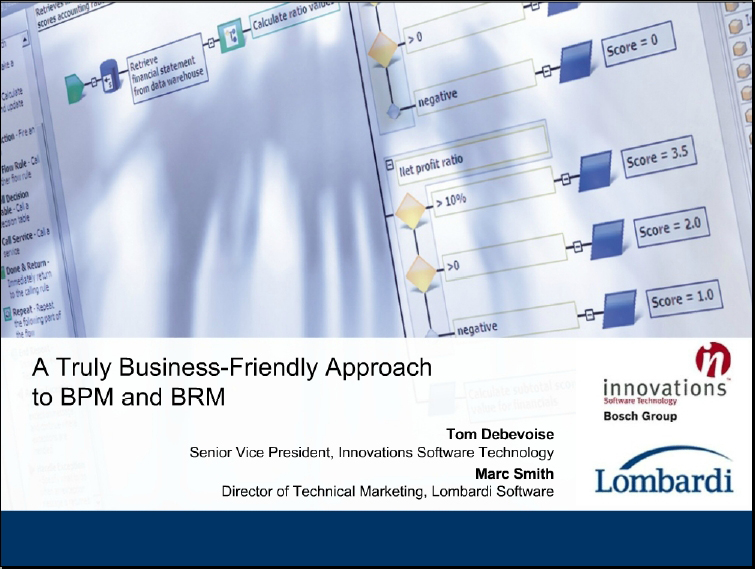
A Truly Business-Friendly Approach to BPM and BRM
For several years, industry leaders have touted the benefits of Business Rules in Business Process Management (BPM). Complex business applications are improved in BPM Suites with Business Rules Management Systems (BRMS). Yet, significant differences exist in available Business Process Management Systems (BPMS) and BRMS products.

The Systems Viewpoint
Systems thinking has been around for quite a while; in the 1960’s it was the subject du jour. Very good articles and books were written then bringing cogent ideas from academic study to the rest of the world – two of my favorite books were C. West Churchman’s The System’s Approach and The Design of Inquiring Systems. But times change, and there is good reason to look again at the systems approach.

Why you Need BPM and SOA
A few years ago there was fairly clear blue water between BPM and SOA in the minds of both users and vendors. Each camp promoted significant benefits from their offerings and, although there was a recognised touch point between the two, each was happy to exist with or without the other.

From BPM to Management By Process
In one of my first courses about Business Process Management, the chairman, an expert in Total Quality Management, was making a major difference between Process Management and Management by Process.
For me it was just a question words. Some years after, making a return on experience from my first BPM initiative, I really understood this difference when I discovered the remedy had been worst than the disease.

Relating Enterprise Strategy to Business Outcomes
I was both privileged and pleased to have the opportunity to present a keynote address at the BrainStorm DC Conference in Washington DC last summer, where my presentation focused on the subject of relating enterprise strategy to business outcomes. By way of reintroducing the topic, I prepared a brief summary of that presentation for publication in the January 2009 edition of the Government Bulletin.

Surviving and Growing During an Economic Downturn
Introduction
We are barraged by the images of our sliding economy on a daily basis. The news media is spreading fear, agony, and despair. Many companies are reacting by deeply cutting staff, reducing services, decreasing quality and squelching morale. Everyone is told that they are simply going to have to do more with less (work harder or lose your job).
Then there are companies that see this downturn as an opportunity to strengthen their company and emerge from the other side stronger than their competition.
